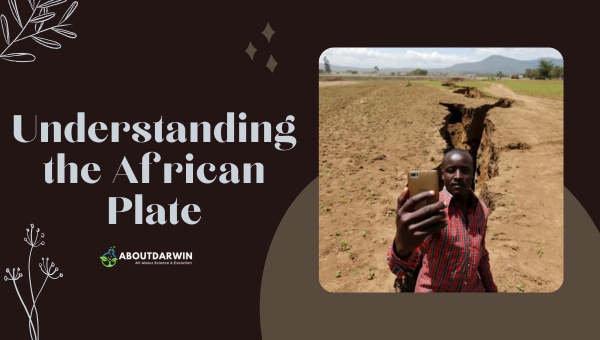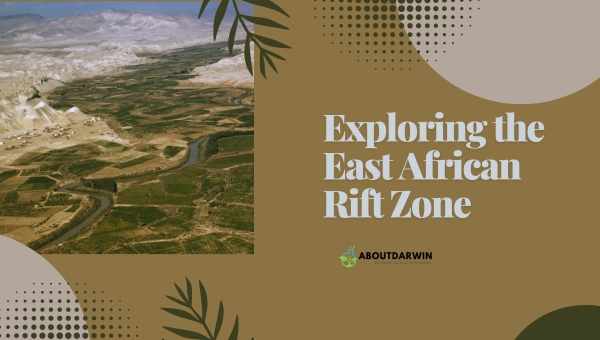Physical Address
304 North Cardinal St.
Dorchester Center, MA 02124
The African tectonic plate, a major geological force, encompasses the entire African continental plate and extends into adjacent oceanic regions.
Spanning approximately 61 million square kilometers, it plays a pivotal role in shaping the continent’s landscape through dynamic processes like the formation of the East African Rift Zone.
This rift, stretching over 3,000 miles from Ethiopia to Mozambique, is an impressive testament to the plate’s movement and geological activity.
As we explore these intricate interactions, the secrets of Earth’s past and future begin to unfold, revealing a world of fascinating geological phenomena.
Contents
The African Plate covers an area of approximately 61,300,000 square kilometers (23,700,000 square miles) and includes most of Africa, except for its easternmost part. It also encompasses adjacent oceanic crust in the Atlantic Ocean and parts of the Mediterranean Sea.

This plate is bounded by several other tectonic plates: the North American Plate and South American Plate to the west, the Arabian Plate and Somali Plate to the east, and the Eurasian Plate to the north.
The African Tectonic Plate is characterized by several ancient cratons, which are stable blocks of continental crust.
Key cratons include:
These cratons were formed during the assembly of the supercontinent Pangea around 250 million years ago and have remained largely stable since then.
The cratons are connected by orogenic belts formed through tectonic activity, which have shaped the continent’s geological framework.
The African Plate moves at an average rate of about 2.5 centimeters per year. This movement contributes to significant geological phenomena such as earthquakes and volcanic activity across the continent.
Exploring the African Tectonic Plate reveals a complex interplay of geological processes that have shaped Africa’s current landscape and will continue to influence its future development.
This plate is essential for comprehending not only Africa’s geology but also broader tectonic dynamics on Earth.
The African Plate is a significant tectonic plate that plays a crucial role in shaping the geological landscape of Africa and its surrounding regions. It is the fourth largest tectonic plate on Earth, encompassing not only the entire continent of Africa but also portions of the adjacent oceanic crust.
The interactions between the African Plate and its neighboring plates lead to various geological phenomena, including rift valleys, earthquakes, and volcanic activity.
The boundaries and movements of the African Plate is essential for comprehending the dynamic processes that have shaped the continent over millions of years.
The African Plate is defined by multiple boundaries that include both divergent and convergent interactions with neighboring tectonic plates.
Overall, the African Plate’s boundaries illustrate a complex interplay between tectonic movements that have profound implications for both geological processes and human activities in Africa.
The African Plate spans approximately 61,300,000 square kilometers (23,700,000 square miles), making it the fourth largest tectonic plate on Earth, following the Pacific, North American, and Eurasian plates.
This extensive area includes most of the African continent and parts of the surrounding oceanic crust, including significant portions of the Atlantic and Indian Oceans.
The plate is moving at an average rate of about 2.15 centimeters per year, which contributes to various geological phenomena such as earthquakes and volcanic activity.
The African Plate’s size and movement are crucial for understanding its role in shaping the continent’s geological landscape.
The African Plate, also known as the Nubian Plate, encompasses much of the continent of Africa as well as adjacent oceanic crust to the west and south.
It is bordered by several tectonic plates: to the west by the North American and South American Plates at the Mid-Atlantic Ridge, to the northeast by the Arabian Plate, and to the southeast by the Somali Plate.
Geological Features: The African Plate is associated with significant geological features such as:
The African Plate moves at an average rate of about 2.5 centimeters per year. This movement has been occurring for millions of years and continues to influence seismic activity and geological formations across Africa.
The African Plate’s location and interactions with neighboring tectonic plates are fundamental to understanding its geological history and current dynamics.
The African Plate is currently moving at an average speed of approximately 2.15 to 2.5 centimeters per year (about 0.85 to 1 inch per year) in a northeast direction.
This movement has been occurring for the past 100 million years and contributes to various geological phenomena, including the formation of rift valleys and mountain ranges.
The plate’s interactions with neighboring tectonic plates, such as the Eurasian Plate to the north and the Somali Plate to the east, influence its dynamics and geological features significantly.
The African Plate is a significant tectonic plate that encompasses much of the African continent and extends into the adjacent oceanic crust. Whether it is convergent or divergent involves examining its boundaries and movements.
The African Plate interacts with several other tectonic plates, exhibiting both convergent and divergent characteristics depending on the specific boundary in question.
The African Plate is currently moving at an estimated speed of approximately 2.15 cm (0.85 in) per year. This movement is primarily northeastward, causing it to converge with the Eurasian Plate, which results in subduction where oceanic crust meets continental crust.
In contrast, its interactions with other plates along divergent boundaries result in rifting processes, particularly evident in the East African Rift Valley, where it is splitting into two new plates: the Nubian and Somali Plates.
While parts of the African Plate exhibit convergent behavior at its northern boundary with the Eurasian Plate, it also has extensive divergent boundaries along its western and eastern edges. This dual nature highlights the complexity of tectonic interactions surrounding this major plate.
The East African Rift Zone (EAR) is a prominent geological feature that serves as a developing divergent tectonic plate boundary. This rift system is formed as the African Plate splits into two smaller plates: the Nubian Plate and the Somali Plate.

The rift extends over 6,000 kilometers from the Gulf of Aden to Mozambique, showcasing a variety of geological formations, including valleys, lakes, and volcanic mountains.
The dynamics of this rift is essential for comprehending the geological history and ongoing tectonic processes in East Africa.
The East African Rift Zone continues to be an area of active research due to its dynamic geological processes and significant ecological importance, making it a key region for continental rifting on Earth.
The East African Rift is indeed classified as a divergent boundary. It represents an active continental rift zone where the Somalian Plate is pulling away from the Nubian Plate, leading to the formation of a rift valley.
This geological process began approximately 22 to 25 million years ago during the Miocene epoch.
Characteristics of the East African Rift:
Geological Implications: The ongoing rifting process has profound implications for the region:
The East African Rift serves as a prime example of a divergent boundary within continental crust, showcasing dynamic geological processes that have shaped and will continue to shape the landscape of East Africa.
The African Plate plays a pivotal role in shaping the geological landscape of the continent. Its movement, at approximately 2.15 cm per year, contributes to significant features such as the East African Rift Zone, which spans over 3,000 miles and showcases the dynamic nature of tectonic activity.
The interactions within the African tectonic plate not only enhances our knowledge of geological processes but also aids in predicting future developments in the region.
Ultimately, these insights are crucial for addressing potential natural disasters and conserving biodiversity across Eastern Africa.